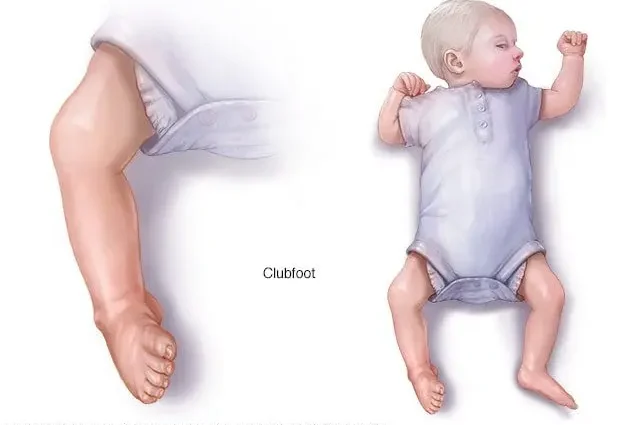Contents
What is club foot?
Every year, one in 800 French babies is born with clubfoot. But what is it exactly? Clubfoot is a bone malformation of the foot, accompanied by retraction of tendons and muscles. Suffice to say, rather complex …
Equine varus, the most common malformation
While there are many types of clubfoot, the more common form remains equine varus. “Varus” meaning that the sole of the foot is turned inwards, and “Equine”, that the foot points downwards. In half of the cases, both feet of the infant are affected. We then say that the malformation is bilateral (and therefore unilateral if it affects only one foot).
Why does baby have club foot?
Clubfoot, a family affair? Maybe … Researchers are currently working on genetic causes of this malformation. It would not be so rare, in fact, to meet several cases within the same siblings! Boys also seem to be more affected than girls, without anyone knowing why.
Clubfoot screening, sometimes before birth
Clubfoot can be detected as early as an ultrasound in the second trimester of pregnancy. In general, the obstetrician directs future parents to a orthopedist, responsible for informing them of the management of this anomaly. Because yes, clubfoot can be treated very well today, provided you start treatment from birth!
How to treat clubfoot?
Immediately born, immediately treated … The treatment of clubfoot begins from the 2nd or 3rd day of life. Early care allows the toddler to stand up and frolic at the same age as his crèche buddies (between 12 and 18 months).
No need to hide it, several months – even years – are needed for the child to find beautiful feet! Two methods are used today in France: orthopedic treatment and functional treatment.
Orthopedic treatment of clubfoot
It consists of immobilize baby’s foot with a cast, which must be renewed… every week! With each change, the doctor “pulls” a little more on the bones, muscles and tendons. The final goal is to put the foot back in a position as close as possible to normal. We also talk about Ponseti method, named after the surgeon who developed it. In the sixth week, the little patient sometimes passes over the operating table. The surgeon cuts the Achilles tendon (tenotomy) to correct the equinus. Then, it started again for the succession of plasters and splints, for about a whole year!
Functional treatment, splints galore
The principle remains similar to orthopedic treatment, with the only difference that instead of casts, they are splints that the physiotherapist changes every day ! The ” french method As the Americans call it, does not include surgery in the sixth week.
Surgery as a last resort?
Unfortunately, not all children are equal when it comes to successful treatment! Almost one in three must finally go through the operating room … The intervention, generally carried out around the age of one year, consists of cutting “a bit of everything” (muscles, skin, tendons …) to get your foot back. in a position close to normal. It is followed by six weeks of plaster casts.
In all cases, the child must be the subject ofregular monitoring until the end of its growth. If he is at high risk of recurrence, he should continue to wear braces day and / or night.
Philippe Souchet *, orthopedic surgeon at Robert Debré hospital (Paris), answers your questions:
- At what age can a child born with clubfoot marcher ?
A toddler, if taken care of from birth, will be able to take their first steps at the same age as other children, around 12 months.
- Will he be able to practice all sports that he wishes, once bigger?
If the foot has returned to a normal position, the doctors see no contraindication to the practice of running, tennis or the like. Certain children have, it is true, less facilities than their little friends, but that does not prevent them from letting off steam!










